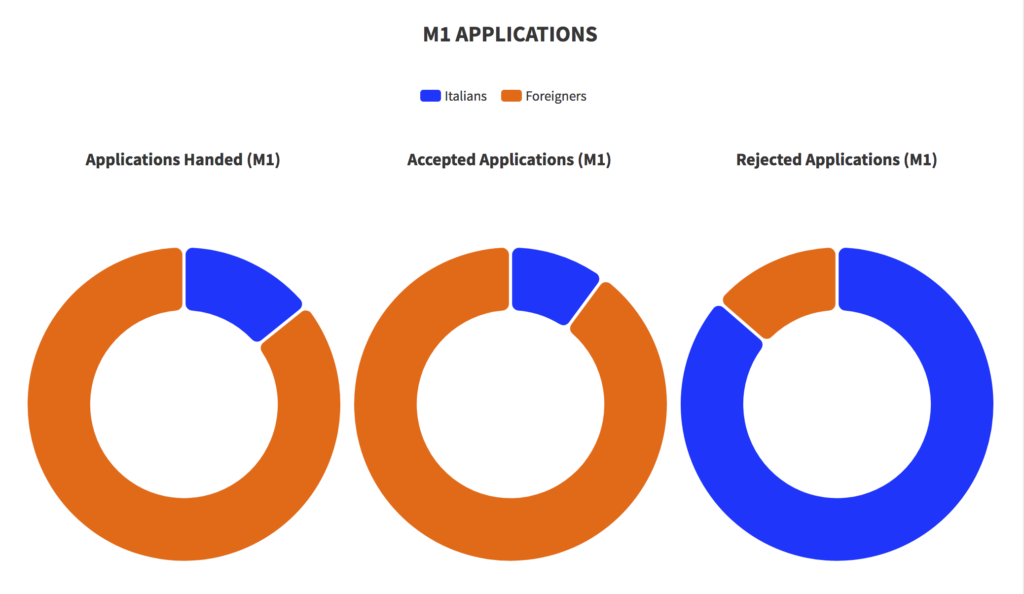The 18th of December 2019, the European parliamentarian Silvia Sardone, belonging to the far-right group named “Identity and Democracy”, published a statement on her official Facebook page, openly attacking the Municipality of Milan, which is currently guided by Democratic Party, main League rival, claiming that “90% of income support (in Milan) is destined to immigrants”. She also defined this trend as “anti-Italian” and “too focused on immigrants only”.

Lega (League), Sardone’s party, frequently claims Italian public services and welfare initiatives tend to assist immigrants more than Italians. This statement, hence, perfectly matches the party’s position, which can be summed up with Lega’s motto “Italians first”.
In an assembly of the Municipality of Milan, then, she enriched her claim by quoting two different documents. According to Sardone, in one measure the Municipality of Milan enacted, called “misura 1”, 90% of the income support annuitants are foreigners, while in another measure, named “misura 2”, only one out of four is Italian.
What is the income support?
The Municipality of Milan offers an income support to those who don’t possess the requirements to benefit from the “basic income”. This support can reach a maximum of 2.000 euros, divided in two tranches (1.000 euros and another 1.000 euros after 6 months).
Who can receive it?
Italians and foreigners who:
- Have been living in Milan for a minimum of 1 year;
- Possess less than 6.000 € ISEE (ISEE is a financial instrument that measures the annual income of the entire family nucleus. Literally, ISEE is the equivalent economic status indicator);
- Don’t receive other forms of support from social policies or other national measures, such as the “basic income”.
Verifying the claim
How did Sardone obtain the data about these two income support measures? She asked Gabriele Rabaiotti, social policies assessor of the Municipality of Milan, to send her information on this. On 12th December 2019, Rabaiotti’s office provided her with some documents containing the sheer numbers of the adopted and discarded families.
In order to grant privacy each applicant’s name, surname and tax number were written incompletely: this way, it is impossible to discover the exact identity of people applying for the two income support measures, and to establish for sure whether they are Italians or foreigners. The Municipality, however, included in their documents a statistic concerning the proportion of Italians and non-Italians among the eligible ones.



As it is possible to observe in the first graph, the document related to “misura 1” outlines an amount of 770 admitted candidates, 692 (90%) of which are told to be foreigners and only 78 (10%) Italians. In the document referring to “misura 2”, instead, on a total of 127 admissions, 95 candidates are foreigners and 32 are Italians, showing a three on one ratio.
Discriminative intent
The percentage of foreigners who receive income support in Milan used by Silvia Sardone are true. However, these documents indicate the total number of applicants and the amount of the discarded ones (814 and 44 in the first case, 141 and 14 in the second case) without specifying the amount of Italians and foreigners among these 44 and 14 non-admitted applicants. This lack of information makes Sardone’s claim controversial, as she stated the Municipality of Milan discriminates Italians, but she didn’t have the tools to know the exact proportion of Italians and foreigners among the non-admitted ones.
Even if she possessed all the data which the Municipality provided us, which include the percentages of the non-admitted ones, it is still not possible to assert there was a discriminative intent, as it is impossible to know the exact amount of people who potentially need income support (since the aid is based on volunteer enrolment, not even the Municipality knows it).
In short, based upon the number provided to us by the Municipality of Milan, we decide that Silvia Sardone’s claim is mostly true.
Leave your comments, thoughts and suggestions in the box below. Take note: your response is moderated.
RESEARCH | ARTICLE © Catholic University of Milan, Italy





